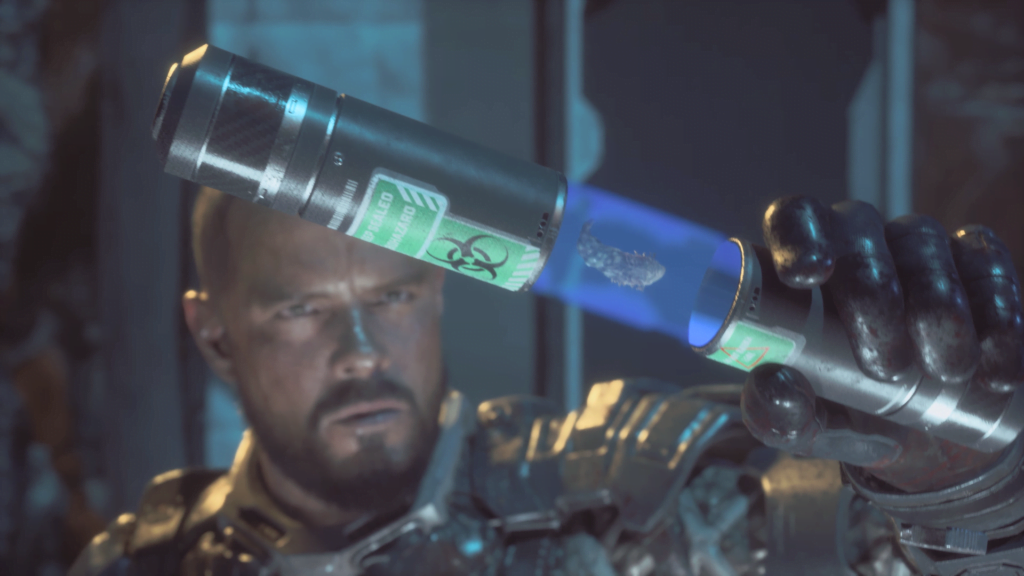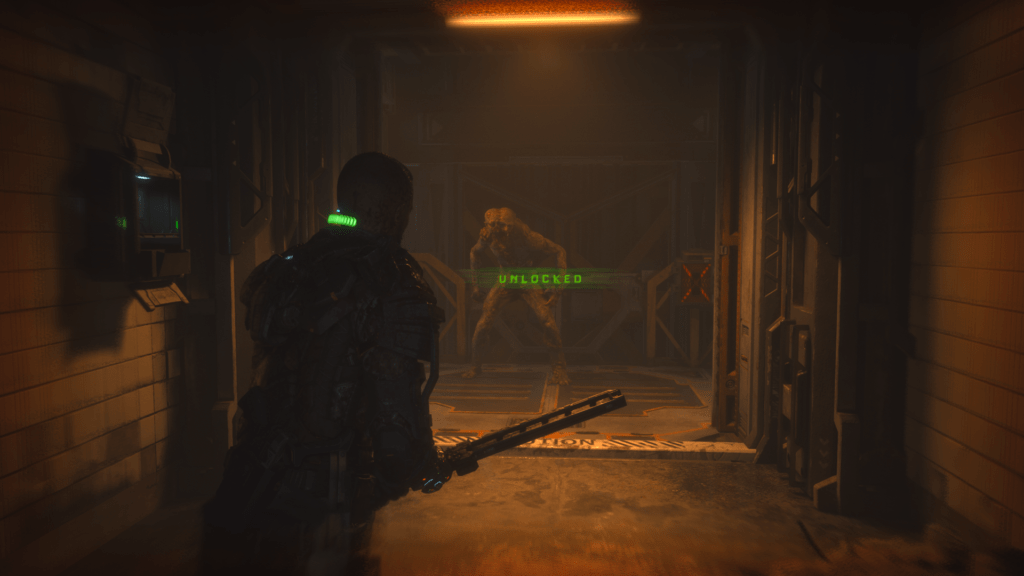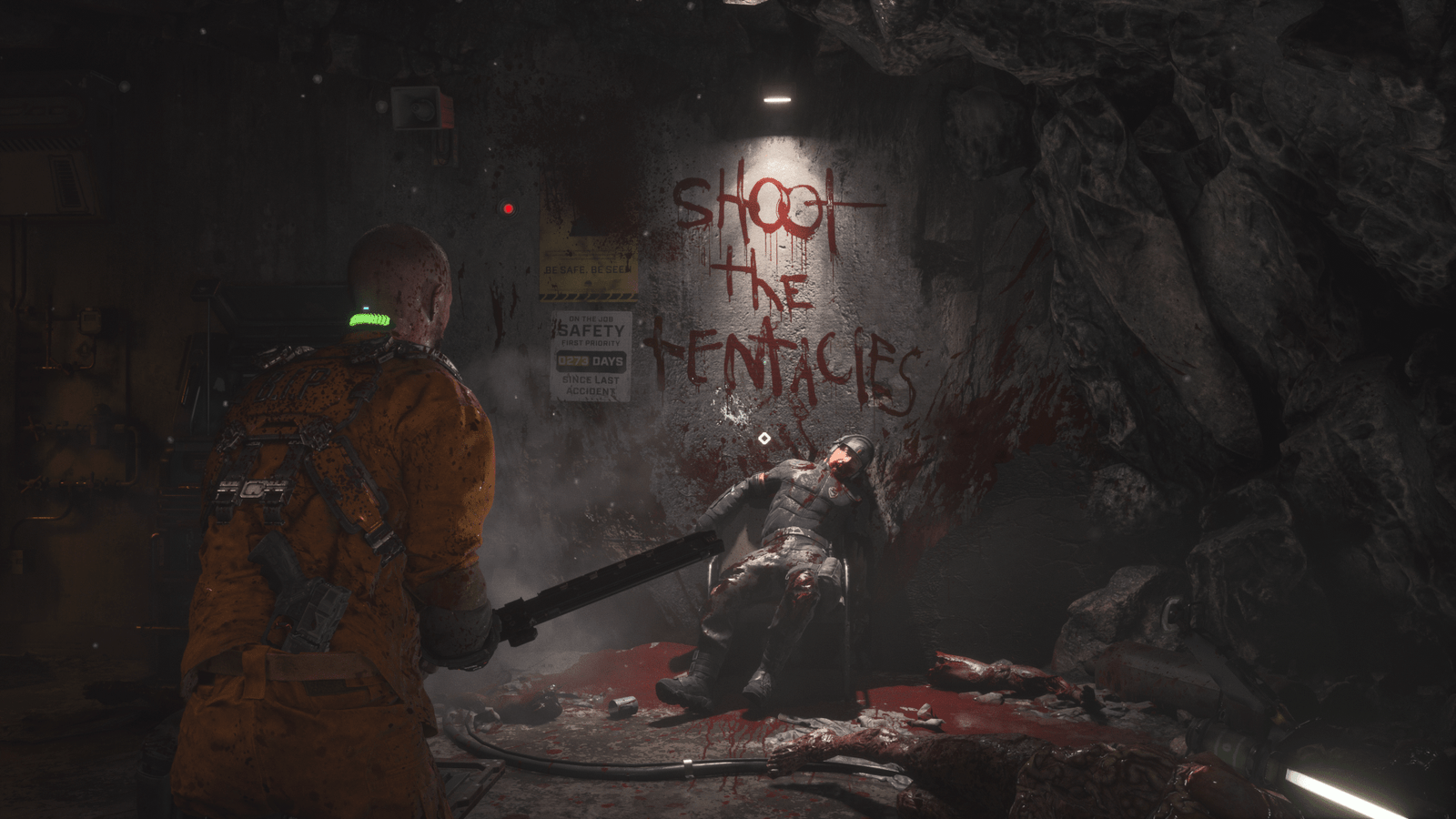What counts as a horror game is often contentious, with purists imposing rigid definitions to the genre that ultimately exclude meaningful experiences. Perhaps I’ll change my mind as this series progresses, but games like The Callisto Protocol make me remiss to adhere to a strict classification because the game, while ostensibly horror, contributes less to the genre than excluded works like Hotline Miami; yet detractors will argue that though Hotline Miami contains horror elements, it is not itself a horror game. Perhaps this gulf in interpretation comes from a difference in utility for the classification, with the needs and interests of purists being different than my own. But I digress. This is not (yet) the place to delve into the grand depths of horror philosophy and attempt a definition.

The Callisto Protocol ticks the boxes of what is generally accepted as horror, its intent being to disturb, frighten, and scare. Its success at that, however, is unfortunately questionable. Developed by Striking Distance Studios and co-directed by industry veteran Glen Schofield,1The Callisto Protocol was co-directed by Glen Schofield and Scott Whitney. The Callisto Protocol lives in the shadow of Schofield’s previous horror masterpiece, Dead Space.2Dead Space was created by Glen Schofield, but he did not direct development of the game, instead acting as an executive producer on the project. While it should be judged on its own terms, Striking Distance didn’t do themselves any favors when conceptualizing the game, as similarities between the two are remarkable. It’s unfortunate, then, that where The Callisto Protocol deviates is where it ultimately fails.
The Callisto Protocol sets itself apart from its peers by heavily emphasizing melee combat over ranged. Where Dead Space mostly had you surgically removing necromorph limbs from afar, The Callisto Protocol encourages you to engage in close quarters physical combat, going as far as making guns more effective when used as a part of your melee combos. It’s at first a very visceral and welcome change of pace from the post-Resident Evil 4 template that has become a mainstay of the survival horror genre, but the frenetic intensity of it all evaporates once you realize you’ll always be prepared for every fight. After that, you rarely feel vulnerable. Ammo scarcity isn’t an issue when most every enemy can be dispatched with a stick that never breaks.

This isn’t to say that The Callisto Protocol is a bad. While the emphasis on melee combat may ultimately detract from the horror of the experience, the mechanics behind it are a lot of fun. Reminiscent of Nintendo’s Punch Out! and Epic’s Infinity Blade, Striking Distance built a system of dodges, blocks, and attacks that look and feel great in motion. The hits that protagonist Jacob Lee, played by Josh Duhamel, delivers are kinetic and brutal—an expression of the character’s desperation to survive. The fights feel dangerous, and often are, with Jacob only being able to take a handful of hits before dying. Fights get chaotic as more enemies enter the fray and it can be exhilarating when you hit your rhythm. Conversely, a missed dodge or swing can often domino into a fatal amount of damage if you fail to regain your composure. The developers clearly realized that the big swings in momentum had potential to frustrate players and included fairly generous checkpointing throughout the game. Restarting a fight is often just a loading screen away, which has the unfortunate result of further sanding the edges off the game’s tension and horror. That’s not to say that fewer checkpoints would have been the answer; it likely would have just introduced different problems and frustrations.
The Callisto Protocol‘s setting, a remote prison on Jupiter’s moon Callisto, is a great place to tell a horror story. Already a home to totalitarian atrocities, Black Iron Prison is inherently a scary place, made worse when you discover that many prisoners were undergoing involuntarily genetic experimentation by order of the warden—a not-so-subtle allegory for the very real horrific dehumanization that takes place in real world prisons. Stack all of that with some good ol’ religious fanaticism and you’ve got yourself a meal that, while tasty, is likely to leave you a bit unsatisfied.3Author’s Note: I was hungry when I wrote this.

Going in with the right expectations, The Callisto Protocol can be a fun action-horror romp. It may not advance the genre in any meaningful ways, but it’s still worthwhile entertainment. It is not, however, the second coming of Dead Space.
Callisto Protocol Screenshots
Screenshots captured from the The Callisto Protocol on Xbox Series X
The Callisto Protocol
Original Release: 2022
Developer(s): Striking Distance Studios
Publisher(s): Krafton
Platforms(s): Windows, PlayStation 4, Playstion 5, Xbox One, Xbox Series X/S

Footnotes
- 1The Callisto Protocol was co-directed by Glen Schofield and Scott Whitney.
- 2Dead Space was created by Glen Schofield, but he did not direct development of the game, instead acting as an executive producer on the project.
- 3Author’s Note: I was hungry when I wrote this.













